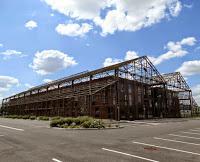 We are in Bègles, not far from the Rive d’Arcins shopping emporium and next to the tiny Port Garonne marina. Unusually, ultra-modern office space has been created inside a metallic cage-like structure. And, tellingly, the new office complex has been given the name “Ateliers Louis Blériot”, a reference to the history of the metal framework, which previously housed workshops founded by aviation pioneer Louis Blériot. What’s the story?
We are in Bègles, not far from the Rive d’Arcins shopping emporium and next to the tiny Port Garonne marina. Unusually, ultra-modern office space has been created inside a metallic cage-like structure. And, tellingly, the new office complex has been given the name “Ateliers Louis Blériot”, a reference to the history of the metal framework, which previously housed workshops founded by aviation pioneer Louis Blériot. What’s the story? Frenchman Louis Blériot (1872-1936) was an engineer and inventor whose first commercial breakthrough was a patented headlamp for trucks. He ploughed much of his earnings into developing and building aircraft and, in 1909, achieved worldwide fame as the first aviator to fly across the English Channel in a heavier than air aircraft. In 1910 he was registered as France’s first licenced pilot (the official paperwork does indeed feature “N°1”), and continued to achieve success at the head of his company Blériot Aéronautique, later also branching out into the production of motorcycles.
In the summer of 1918, just after the First World War, the wealthy Blériot acquired Château Tartifume and the surrounding 160 acres (65 hectares) of Garonne-side land in Bègles. Come 1920, Blériot Aéronautique merged with S.P.A.D. (Société de production des aéroplanes Deperdussin), the new company operating a factory in Suresnes, a pilots’ school in Pau, workshops and a training establishment in Buc, to which were to be added brand new hangars here in Bègles, along with an airfield.
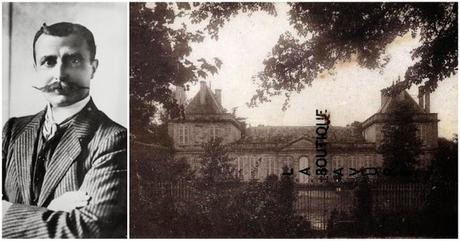
Cool moustache, cool aviator. Louis Blériot (source: Wikipedia) and his 1918 acquisition, the Château de Tartifume (source: delcampe.net).
The immense hangars, the metallic structure of which were described as being “de type Eiffel”, were opened in 1924. They provided a 10,300-square-metre working environment for the S.P.A.D. aircraft repair and maintenance workforce, who numbered 50 by 1934, when France’s Ministère de l’Air urged the company to integrate a wider organisation, Union Coopérative Aéronautique (UCA), which also included the employees of fellow pilots and aviation engineers Henry Potez, Marcel Bloch (who later famously changed his name to Marcel Dassault) and Henri Farman.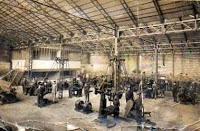
The view inside the factory,
source: delcampe.net
The facility became a bona fide factory, manufacturing aircraft including the Jean Guillemin-designed JG.43 military ambulance and postal aircraft, and the Potez 54 hydroplane. When war broke out, the plant was taken over by German forces and produced Focke-Wulf Fw 189 twin-engine tactical reconnaissance and army cooperation aircraft.

Two types of aircraft produced in Bègles, a Guillemin JG.43 (pictured is a remarkably similar JG.40, source airwar.ru) and a Focke-Wulf FW 189 (source: Wikipedia)
Once the Second World War was over, SNCASO activities shifted back to revision and maintenance and the entity became known as SFERMA (Société Française d'Entretien et de Réparation de Matériel Aéronautique), but gradually work shifted away from Bègles and towards Mérignac. In 1970, another name change saw the company become SOGERMA (Société Girondine d'Entretien et de Réparation de Matériel Aéronautique), and to date the company continues to trade under this name and is a fully-owned subsidiary of the Airbus Group. (The official website states that the Mérignac facility now manufactures wings and ailerons for ATR regional transport aircraft.)But let's return to Bègles, where the adjoining airfield was also to disappear from sight more than 50 years ago. Milestones over the years included massive aviation meetings in 1924 and 1927, and the first ever flight by a glider in Gironde in October 1930. The airfield, known variously as Aérodrome Tartifume, Aérodrome Blériot and Aérodrome de Bègles, was dismantled in the 1960s as plans for the Rocade ring-road were rolled out. (Presumably, Château Tartifume also disappeared around this time.) A new airfield, Bordeaux-Léognan-Saucats, was founded further out of town to take its place. Meanwhile, by the 1990s, the area that had been vacated was used to build Rive d’Arcins shopping center.
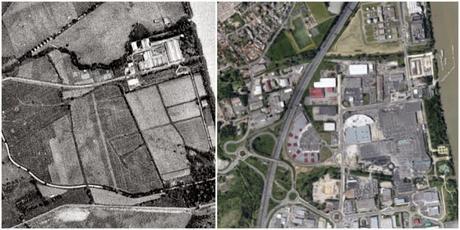
The airfield as it was in 1950 (source: anciens-aerodromes.com/IGN) and the view today on GoogleEarth. On both pictures the Blériot hangars are over to the top right.
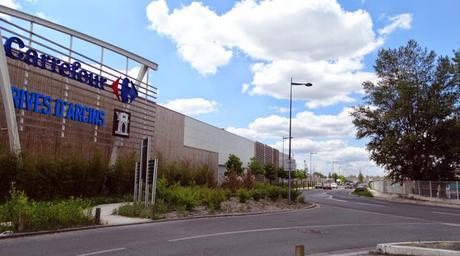
The scene today where the airfield used to be.
This all brings us back to the metallic structure, which remained under the ownership of the Communauté Urbaine de Bordeaux (now Bordeaux Métropole). Around 2011, in agreement with the local council in Bègles, the decision was made to lease the premises to a private developer for a period of 52 years. Keys to the project (and responsibility for all financial aspects) were therefore handed over to the “maîtres d’ouvrage” Bertrand Pascal, SNC Espace Blériot/Aquitaine Promotion. The chosen project, therefore now known as “Ateliers Louis Blériot”, was the design of the Bernard Bühler architectural agency and consisted of the construction of the two low-rise office blocks within the metal framework, combining to offer 5,500m² of modular workspace (coupled with 226 parking spaces).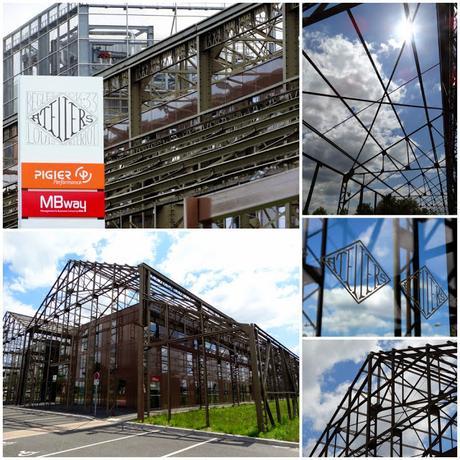
The buildings were delivered in 2014 and, to a neutral observer like myself, do look like a great place to work. However, the developers do seem to be some way from displaying a “no vacancies” sign on the buildings: from what I can make out, the sole current occupants are Pigier Performance, a business management school, and MBway… also a management school. Wandering around the building, most of the units are still conspicuously empty and, as so often, a large hoarding advertises office space to let.
So, if you’re looking to rent office space somewhere with a bit of aeronautical history attached to it, within easy reach of a tiny marina and a massive retail park, then Ateliers Louis Blériot may just be what you’re looking for! Just follow the signposts to “Zone d’Activités Tartifume” or plug “rue Blériot, Bégles” into your satnav!
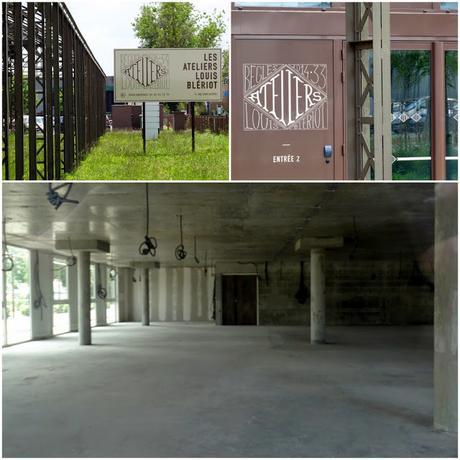
This empty office space could be yours.
- Find it on the Invisible Bordeaux map:
- Ateliers Louis Blériot, rue Blériot, Bègles.
- Big thanks to my friend Harvey Morgan for suggesting this subject!
